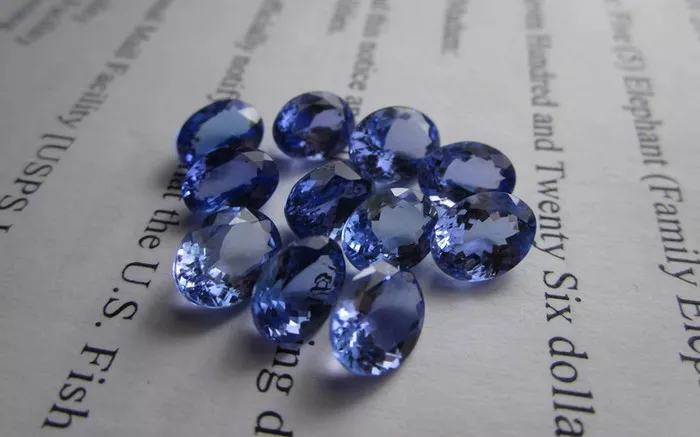Tanzanite is one of the most captivating gemstones in the world, known for its stunning blue and violet hues. Originally discovered in Tanzania in the late 1960s, Tanzanite quickly gained fame for its unique coloration and rarity. However, in recent years, Brazil has emerged as a notable source of this remarkable gem. In this article, we will explore Brazilian Tanzanite in detail, including its origins, characteristics, market trends, and what makes it distinct from Tanzanite found in its traditional locale.
Origins and Discovery
1. The Discovery of Tanzanite
Tanzanite was first discovered in the Merelani Hills of Tanzania in 1967. The gem’s discovery was a serendipitous event when local Masai herders stumbled upon a vivid blue crystal that piqued the interest of a geologist. The mineral was subsequently identified as a variety of the mineral zoisite, with the addition of trace amounts of vanadium giving it its unique blue color.
2. The Brazilian Find
In the early 2000s, tanzanite was discovered in Brazil, marking a significant development in the gemstone’s history. The Brazilian deposits were found in the state of Minas Gerais, which is already renowned for its rich mineral resources. This discovery introduced a new source of tanzanite to the market, diversifying the global supply and influencing the gemstone’s availability and pricing.
Characteristics of Brazilian Tanzanite
1. Color
One of the most defining characteristics of tanzanite is its color. Tanzanite ranges from a deep blue to a rich violet, with the most prized stones exhibiting a strong blue-violet hue. Brazilian tanzanite generally displays similar color characteristics to its Tanzanian counterpart, though subtle differences in hue and saturation can be observed. The Brazilian tanzanite is often noted for its slightly warmer tone, which can be attributed to variations in the local mineral composition.
2. Clarity and Transparency
Clarity is another crucial factor in assessing the value of tanzanite. The gem is typically transparent to translucent, with the best specimens being free of visible inclusions. Brazilian tanzanite, like Tanzanian tanzanite, can occasionally exhibit inclusions, but high-quality stones with minimal or no inclusions are highly sought after. The clarity of the gem significantly impacts its brilliance and overall appeal.
3. Cut and Shape
The cut of tanzanite affects its light performance and appearance. Brazilian tanzanite is often cut into various shapes, including round, oval, and emerald cuts. The gem’s brilliance and fire are maximized when it is expertly cut to enhance its color and minimize any inclusions. The cutting process can also influence the gem’s overall value, with well-cut stones commanding higher prices.
4. Size and Weight
Tanzanite is found in various sizes, from small accent stones to larger, statement pieces. Brazilian tanzanite, like Tanzanian tanzanite, is available in a range of sizes, and the size of the gem can impact its value. Larger stones that exhibit excellent color and clarity are particularly prized by collectors and investors.
Market Trends and Value
1. Rarity and Availability
While tanzanite is considered rare due to its limited geographic distribution, the Brazilian deposits have provided an additional source of the gem, helping to meet global demand. However, the overall supply of tanzanite remains constrained by the fact that it is found in only a few locations worldwide. As a result, tanzanite remains a valuable and sought-after gemstone.
2. Pricing
The price of tanzanite is influenced by several factors, including color, clarity, cut, and size. Brazilian tanzanite is generally priced similarly to Tanzanian tanzanite, though market trends and individual gem characteristics can affect pricing. The introduction of Brazilian tanzanite to the market has added diversity to the gemstone’s availability, providing buyers with more options and potentially influencing price fluctuations.
3. Market Demand
Tanzanite’s popularity has grown over the years, driven by its stunning appearance and the increasing awareness of its unique qualities. Brazilian tanzanite has contributed to this trend, offering an alternative source for enthusiasts and collectors. The gem’s allure, combined with its relative rarity, ensures continued interest and demand in the global market.
Care and Maintenance
1. Cleaning
Tanzanite requires proper care to maintain its beauty over time. To clean Brazilian tanzanite, use a mild soap solution and a soft brush. Avoid harsh chemicals or ultrasonic cleaners, as these can damage the gemstone. Gently wipe the stone with a soft cloth to remove any remaining residue.
2. Storage
When storing tanzanite, keep it separate from other jewelry to prevent scratching. A soft pouch or a lined jewelry box is ideal for protecting the gem. Additionally, avoid exposing tanzanite to extreme temperatures or prolonged sunlight, as these conditions can affect its color and clarity.
3. Professional Maintenance
For regular maintenance and to address any potential issues, consider having tanzanite examined by a professional jeweler. Regular check-ups can help ensure that the gemstone remains in good condition and that any settings or mountings are secure.
See Also: Benefits of Owning a Tanzanite Brooch
The Future of Brazilian Tanzanite
1. Emerging Trends
As the market for tanzanite continues to evolve, Brazilian tanzanite is likely to play an increasingly important role. The gemstone’s unique qualities and the growing recognition of its Brazilian origins may influence future trends in the industry. Continued exploration and advancements in mining techniques may also impact the availability and characteristics of Brazilian tanzanite.
2. Investment Potential
Investors and collectors should consider Brazilian tanzanite as a valuable addition to their portfolios. The gemstone’s rarity, combined with its striking appearance, makes it a worthwhile investment. However, as with any investment, it is essential to stay informed about market trends and seek professional advice to make informed decisions.
Conclusion
Brazilian tanzanite represents an exciting development in the world of gemstones, offering a fresh perspective on a gem that has already captivated the world with its beauty. With its rich color, clarity, and the unique characteristics of its Brazilian origin, this gemstone continues to fascinate collectors, investors, and enthusiasts alike. As the market for tanzanite evolves, Brazilian tanzanite is set to play a significant role in shaping the future of this remarkable gemstone.


